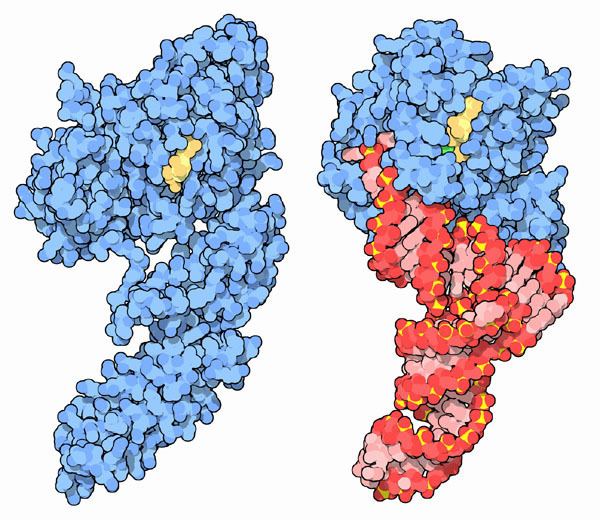 | ||
Roles of ef g and gtp in translocation
EF-G or elongation factor G (historically known as translocase) is a prokaryotic elongation factor and a GTPase responsible for catalyzing the coordinated movement of tRNA and mRNA through the ribosome.
Contents
- Roles of ef g and gtp in translocation
- ryobi rts 1800 ef g
- Function
- Clinical significance
- Evolution
- References
ryobi rts 1800 ef g
Function
The factor EF-G catalyzes the translocation of the tRNA and mRNA down the ribosome at the end of each round of polypeptide elongation. Just like the EF-Tu+tRNA+GTP complex, EF-G binds to the ribosome in its GTP-bound state. When it binds to the ribosome A-site, EF-G causes the tRNA previously occupying that site to occupy an intermediate A/P position (bound to the A site of the small ribosomal subunit and to the P site of the large subunit), and the tRNA in the P site is shifted to a P/E hybrid state. EF-G hydrolysis of GTP causes a conformation change that forces the A/P tRNA to fully occupy the P site, the P/E tRNA to fully occupy the E site (and exit the ribosome complex), and the mRNA to shift three nucleotides down relative to the ribosome due to its association with these tRNA molecules. The GDP-bound EF-G molecule then dissociates from the complex, leaving another free A-site where the elongation cycle can start again.
Apart from its role in translocation, EF-G, working together with Ribosome Recycling Factor, promotes ribosome recycling in a GTP-dependent manner.
Clinical significance
It is normally inhibited by fusidic acid, but resistance has emerged.
Evolution
EF-G has a complex evolutionary history, with numerous paralogous versions of the factor present in bacteria, suggesting subfunctionalization of different EF-G variants.
